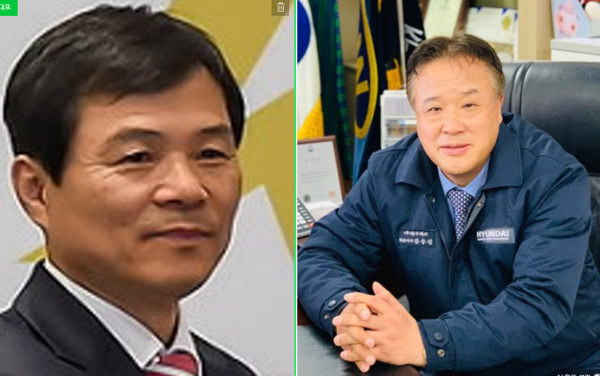
As the Asian Taekwondo Union (ATU) presidential election approaches in just over a month, attention is intensifying. With the race narrowing down to a contest between Kim Sang-jin and Yang Jin-bang, the unpredictability of the outcome is heightening the tension.
Until now, the ATU presidential election had not been a major focus within Korea’s taekwondo community. The primary reason is that Lee Kyu-seok, who began serving as ATU Secretary-General in 1984 and was elected President in 2013, has maintained long-term control for over 40 years.
However, with Lee's 12-year presidency coming to an end, this election is seen as pivotal, as it is closely linked to the structure of the next WT (World Taekwondo) Vice President and potential future President. Both candidates are expected to stake everything in what is shaping up to be a fierce battle.
The ATU currently has 44 nations as member. Asia, the largest and most populous continent on Earth, spans 44,579,000 km², which is about 200 times the size of the Korean Peninsula. Geopolitically, Asia meets Africa via the Suez Canal and is bordered from Europe by the Caucasus, the Caspian Sea, the Ural River and Mountains, and the Novaya Zemlya archipelago. Alongside Africa—both rich in natural resources—Asia is a key component of the "Eurasia Strategy", which seeks to connect these regions with the developed European continent. In this context, the Middle East (especially the UAE and Saudi Arabia), leveraging oil wealth, is emerging as a global hub for sports diplomacy, strategically linking Asia, Europe, and Africa.
Asia is home to about 60% of the global population and consists of 48 independent countries, 44 of which are members of the ATU. Three main issues highlight the significance of the ATU presidency in the Asian taekwondo market. First, many national taekwondo federation presidents under the ATU are influential figures in their respective countries—such as IOC members, royalty, nobility, education or sports ministers, or CEOs of major conglomerates. Second, in several Asian nations, the military and royal influence remains strong, with grandmasters of taekwondo having natural networks with national elites and leadership. Lastly, China and India, two of the world's most populous countries, account for nearly half of global taekwondo practitioners, making their role in the market especially noteworthy.
President Lee Jae-myung has declared his ambition to make Korea one of the top five global cultural powerhouses and has emphasized the importance of strengthening the K-culture industry. As the root of the Korean Wave (Hallyu), taekwondo—Korea’s national martial art—must be prioritized as a national agenda for cultural industrialization. Beyond being a medal-producing sport in the Olympics or Asian Games, it is now poised—as President Lee has emphasized—to become a core driving force in the AI era, positioning taekwondo as the foundation of "AX (Asian Experience)".
As the July 24 election draws nearer, it’s clear that both candidates will be under immense pressure. Will it be a businessman or an administrator? In alignment with the new government’s policies, the emergence of a new leader suited for public-private diplomacy and capable of guiding AI-taekwondo marks a very exciting and pivotal moment.

